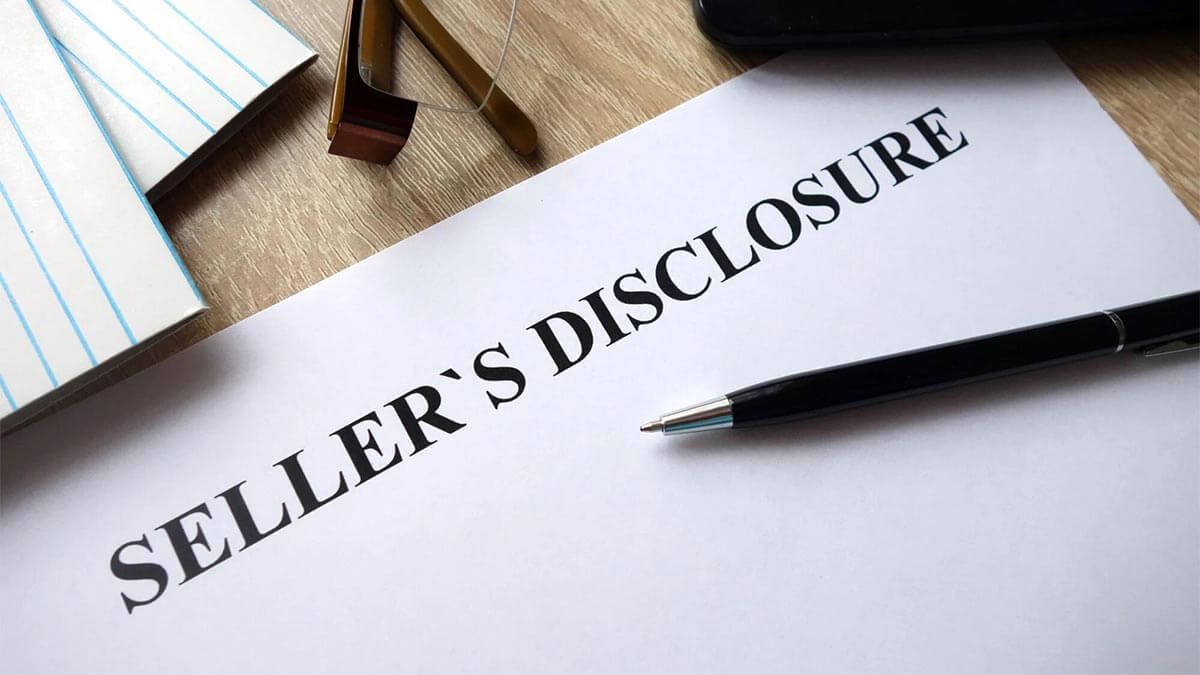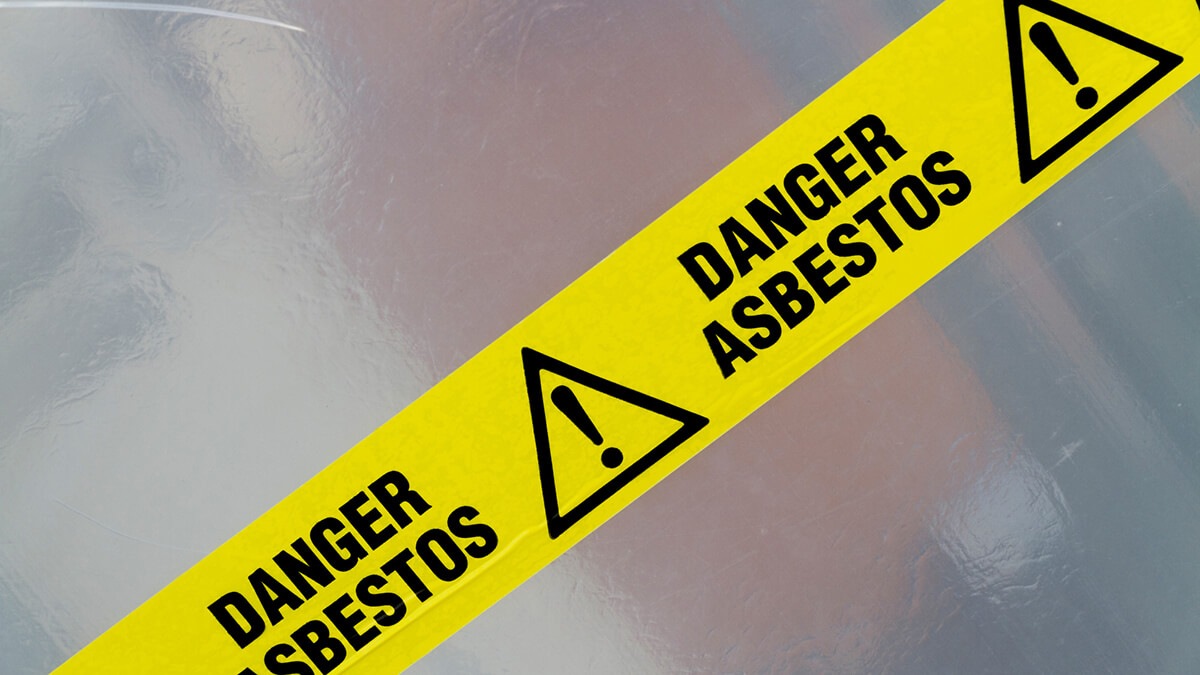Selling a home in Texas can be a straightforward process, but when it comes to seller disclosures, it’s crucial to be aware of the state’s requirements. Seller disclosures, often overlooked, are legally required documents meant to inform buyers of any known issues with the property. By staying informed on these requirements, you can avoid future legal headaches and potentially costly disputes.
At iBuyer.com, we’re here to simplify the process. Our team provides clear guidance to help you navigate the Texas Seller Disclosure Notice and ensure full compliance, so you can feel confident every step of the way. If you’re considering selling your home and want a smooth, hassle-free experience, reach out to iBuyer.com today.
Compare Cash Offers from Top Home Buyers. Delivered by Your Local iBuyer Certified Specialist.
One Expert, Multiple Offers, No Obligation.
Texas Seller Disclosure
- What is the Texas Seller Disclosure Notice?
- Key Disclosure Requirements in Texas
- How to Complete the Texas Seller Disclosure Notice
- Common Mistakes to Avoid When Completing Your Disclosure
- What Happens if You Fail to Disclose Information?
- Reilly’s Two Cents
- Additional Resources for Texas Sellers
- Conclusion
What is the Texas Seller Disclosure Notice?
The Texas Seller Disclosure Notice is a required document that lets home sellers share important information about their property’s condition with potential buyers. Its purpose is to give buyers a clear, upfront look at any known issues, from past repairs to current conditions, so they can make informed decisions before buying.
This requirement stems from Texas law, which aims to protect both buyers and sellers. Sellers are required to disclose all known issues honestly. This doesn’t mean sellers must guarantee their property is flawless—it’s about transparency. By filling out the disclosure, sellers show good faith, reducing the risk of future disputes.
For anyone looking to view or start the process, you can access the official Texas Real Estate Commission (TREC) Seller Disclosure form here. This form is the essential first step to fulfilling your disclosure duties in Texas.
Key Disclosure Requirements in Texas
Texas requires that sellers disclose specific details about a property’s condition to help buyers understand what they’re purchasing. These disclosures cover various aspects, from structural integrity to environmental risks, all critical for a buyer’s decision-making. Here’s a breakdown of what sellers must disclose under Texas law.
Common Property Conditions to Disclose
Sellers need to inform buyers about any issues with major property systems and structural components. This includes:
- Foundation issues: Any history of foundation repairs or known cracks should be disclosed.
- Roof condition: Disclose any past leaks, repairs, or age-related wear that might affect the roof’s condition.
- Plumbing and electrical systems: Report any existing problems, such as leaks, clogs, or outdated wiring that could impact safety or functionality.
- HVAC status: Sellers should disclose the age, condition, and any known repairs of heating and cooling systems.
Providing this information not only keeps sellers compliant but also builds buyer trust, as they know they’re getting a complete picture of the property’s condition.
Environmental and Hazard Disclosures
In addition to structural conditions, Texas law requires that sellers disclose environmental hazards or potential safety risks that may affect the property or its occupants. Here are some common issues that need to be shared:
- Lead-based paint: For properties built before 1978, federal law requires disclosure of any known presence of lead-based paint or related hazards.
- Flooding risks: If the property has been subject to flooding or is located in a designated flood-prone area, this must be disclosed, including any flood-related repairs.
- Asbestos: Known asbestos materials or any past asbestos removal work should be disclosed, as asbestos poses significant health risks if disturbed.
- Other environmental hazards: Any known presence of radon gas, mold, or soil contamination should be shared, especially if they pose a risk to the health or safety of future occupants.
Accurate environmental disclosures not only protect buyers but also help sellers avoid legal issues related to nondisclosure, which can arise after the sale.
Recent Updates to Disclosure Requirements
In 2023, Texas updated its disclosure requirements to provide even more clarity for buyers and ensure sellers are fully transparent. These updates include more specific instructions on reporting issues, as well as additional items that now require disclosure:
- Structural improvements or repairs: Sellers must disclose any major changes, such as remodels or repairs, specifying whether these were done with permits and meeting local codes.
- Energy sources and efficiency: Any non-standard energy features, such as solar panels or energy-saving installations, now require disclosure, along with any related contracts or warranties.
- Smart home devices: Sellers should disclose smart home systems, such as security cameras, thermostats, and other devices, clarifying which items will remain with the property after the sale.
These updates ensure buyers receive a full picture of the property’s condition and features, minimizing misunderstandings. For more details, Seller Shield is a helpful resource that outlines all recent updates and helps sellers navigate these expanded requirements.
How to Complete the Texas Seller Disclosure Notice
Filling out the Texas Seller Disclosure Notice can feel overwhelming, but a step-by-step approach can simplify the process. Here’s a guide to help you accurately complete each section and avoid common errors.
Step-by-Step Guide to Completing the Form
- Property Information: Start by listing basic details about the property, including the address, year built, and any additional features like swimming pools or fireplaces.
- General Property Condition: Check each item listed (such as walls, ceilings, and appliances) and note any known issues or repairs. If unsure about a condition, it’s okay to mark “unknown”—just be honest about what you know.
- Structural and System Details: Provide information on the age and condition of the foundation, roof, plumbing, electrical systems, and HVAC. Include any major repairs, replacements, or upgrades made to these systems.
- Environmental Disclosures: Indicate any known environmental hazards, including lead-based paint, flooding, and asbestos. These are essential for buyer awareness and must be disclosed if applicable.
- Additional Details: Here, disclose any other relevant information such as recent renovations, energy-efficient features, or smart home devices. It’s helpful to specify whether these improvements come with transferable warranties.
Tips for Accuracy
- Distinguish between repairs and ongoing issues: For example, if the roof had a leak but was professionally repaired, state that. If an issue persists, be clear to avoid any confusion.
- Consult professionals if needed: If unsure about a specific disclosure, it’s wise to consult a contractor or inspector. They can provide details that make your disclosure more accurate and reliable.
Following this approach ensures your disclosure notice is thorough, accurate, and protects you from future liability.
Common Mistakes to Avoid When Completing Your Disclosure
Completing the Texas Seller Disclosure Notice is essential, but even small mistakes can lead to big issues down the road. Avoid these common pitfalls to ensure your disclosure is accurate and legally sound.
- Not Disclosing Past Repairs or Damages Adequately: It’s easy to forget past repairs, especially if they were minor or done years ago. However, buyers are entitled to know about all past work on the property. Even if a repair resolved an issue, include it on the form to provide full transparency.
- Omitting “Unknown” Answers When Unsure: If there’s something you genuinely don’t know about, don’t guess or leave it blank. Use the “unknown” option provided on the form. This is particularly helpful if you’ve never inspected or used certain features, like fireplaces or sprinkler systems.
- Overlooking Disclosure of Seasonal or Intermittent Issues: Problems like occasional basement leaks or HVAC issues that only arise in extreme temperatures should still be disclosed, even if they don’t occur regularly. Buyers need this context to make informed decisions.
By keeping these common mistakes in mind, you can avoid miscommunication with buyers and protect yourself from potential liability.
What Happens if You Fail to Disclose Information?
Failing to complete the Texas Seller Disclosure Notice accurately can lead to serious consequences. Not only does non disclosure breach legal requirements, but it can also expose sellers to significant penalties.
- Financial Penalties and Legal Action: If a buyer discovers undisclosed issues after purchasing the property, they can take legal action against the seller. This can result in fines or, in some cases, costly settlements to cover the buyer’s damages.
- Liability Risks: Texas Real Estate Source emphasizes that honesty in disclosures protects sellers from future disputes. If a buyer proves that the seller intentionally withheld information, the seller could be liable for repairs, court costs, and even punitive damages.
- Reputation and Future Transactions: Lawsuits and legal issues can affect a seller’s reputation, which may impact future real estate transactions or financing opportunities. Even if a seller “wins” a legal dispute, the process can be time-consuming and stressful.
Completing the disclosure notice thoroughly not only keeps you compliant but also fosters buyer trust, which is invaluable in any real estate transaction.
Reilly’s Two Cents
Reilly, an experienced real estate professional, has seen firsthand the challenges sellers face with disclosures. Though she’s licensed in Florida, her insights can help Texas sellers navigate the disclosure process smoothly and avoid common pitfalls.
- Double-Check All Areas with a Professional
Even if you feel certain about your property’s condition, a quick inspection from a licensed professional can provide extra assurance. They may catch things you missed, and a certified inspection report adds credibility to your disclosure. - Document Any Conversations with Contractors or Inspectors
Keep notes from any discussions about repairs, maintenance, or assessments. Whether it’s an email exchange with a roofer or a signed estimate from an HVAC technician, these documents help back up your disclosures and show buyers you’ve been proactive about property care. - Be Proactive and Transparent
Buyers appreciate honesty. Disclosing even minor issues upfront can prevent disputes after the sale and foster a more positive transaction. Transparency shows buyers that you’ve taken the process seriously, often resulting in smoother negotiations.
Reilly’s advice encourages sellers to approach the disclosure process with thoroughness and honesty, which can make all the difference when closing the deal.
Additional Resources for Texas Sellers
Navigating the Texas Seller Disclosure process can feel complex, but there are numerous resources available to help sellers get it right. Here are some essential tools and contacts to support you along the way:
- Texas Real Estate Commission (TREC): TREC provides official forms, guidelines, and updates on real estate laws. Visit TREC’s website to access the latest version of the Seller Disclosure Notice and other helpful documents.
- Texas Property Laws: Familiarizing yourself with Texas property laws can clarify your responsibilities as a seller. Legal guides available on sites like the Texas State Law Library’s website can offer reliable information on disclosure requirements.
- Professional Services for Assistance: If you have questions or need help completing the disclosure notice, consider consulting a real estate attorney, home inspector, or licensed realtor. Their expertise can ensure your disclosures are both accurate and complete.
- iBuyer.com Services: At iBuyer.com, we specialize in helping sellers move quickly and efficiently through the sales process. Our team can provide additional guidance on disclosure requirements, connecting you with trusted resources to help streamline your sale.
Having these resources at hand can ease the disclosure process, ensuring you meet Texas’s requirements and build buyer confidence from the start.
Conclusion
When selling a home in Texas, completing the Seller Disclosure Notice thoroughly and accurately is crucial. Proper disclosures protect both sellers and buyers by ensuring transparency about the property’s condition. This process not only keeps you compliant with Texas law but also builds trust with potential buyers, helping to prevent misunderstandings and legal issues down the line.
If you’re ready to sell and want expert support to guide you through each step, iBuyer.com is here to help. Our team is committed to making the selling process as smooth as possible, from navigating disclosures to closing with confidence. Reach out to iBuyer.com to simplify your sale and ensure you’re meeting every requirement with ease.
Instant Valuation, Confidential Deals with a Certified iBuyer.com Specialist.
Sell Smart, Sell Fast, Get Sold. No Obligations.
FAQ
Failing to complete the disclosure notice accurately can lead to legal consequences, including fines and potential lawsuits. If a buyer finds that issues were knowingly withheld, they may seek compensation or legal action, which could become costly.
Yes, sellers must disclose any known property conditions that could impact the buyer’s decision. This includes issues with the foundation, roofing, plumbing, electrical, and HVAC systems, along with any environmental hazards.
If you’re unsure about a property condition, it’s best to mark “unknown” on the disclosure form. It’s also wise to consult a professional to verify the condition of major systems, as this can provide additional reassurance and clarity.
Texas disclosure laws are updated periodically to ensure buyer protection. It’s a good idea to check the Texas Real Estate Commission’s (TREC) website or consult a real estate professional before selling to make sure you have the most current information.
Even with an “as-is” sale, sellers are still legally required to complete the Texas Seller Disclosure Notice. “As-is” simply means the buyer accepts the property’s current condition, but sellers must still disclose known issues.
Reilly Dzurick is a seasoned real estate agent at Get Land Florida, bringing over six years of industry experience to the vibrant Vero Beach market. She is known for her deep understanding of local real estate trends and her dedication to helping clients find their dream properties. Reilly’s journey in real estate is complemented by her academic background in Public Relations, Advertising, and Applied Communication from the University of North Florida. This unique combination of skills has enabled her to seamlessly blend traditional real estate practices with cutting-edge marketing strategies, ensuring her clients’ properties gain maximum visibility and sell quickly.
Reilly’s career began with a strong foundation in social media marketing and brand communications. These skills have proven invaluable in her real estate practice, allowing her to offer innovative marketing solutions that set her apart in the industry. Her exceptional ability to understand and meet clients’ needs has earned her a reputation for providing a smooth and satisfying transaction process. Reilly’s commitment to client satisfaction and her innovative approach have garnered her a loyal client base and numerous referrals, underscoring her success and dedication in the field.
Beyond her professional achievements, Reilly is passionate about the Vero Beach community. She enjoys helping newcomers discover the charm of this beautiful area and find their perfect home.
Outside of work, she loves exploring Florida’s stunning landscapes and spending quality time with her family. Reilly Dzurick’s combination of expertise, marketing savvy, and personal touch makes her a standout real estate agent in Vero Beach, Florida.




